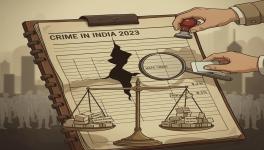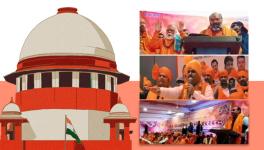From Godhra to Una
Are suffering and oppression mere accidents of birth? If so, resistance must also be an accident of birth. Harsh Mander has titled his recent book Fatal Accidents of Birth: Stories of Suffering, Oppression and Resistance after the powerful phrase from Rohit Vemula's suicide note. Published by Speaking Tiger, this book carries compelling stories from two decades of journalism and activism.

August 2016. In a surge of collective rage, hundreds of Dalits joined the Azadi Kooch, a protest march from Ahmedabad to the village of Una in Gir Somnath district against the public lashing of Dalit men for skinning a dead cow. One among them was a middle-aged man who repaired shoes on a street-corner in Ahmedabad and who, for many years, had slept on the pavements of the city. He declared that he would work for Dalit-Muslim unity. His name was Ashok Mochi. Fourteen years earlier, in 2002, when angry mobs surged through the streets of Ahmedabad, burning and looting the homes and shops of their Muslim neighbours, murdering and raping thousands, this man’s face stamped itself indelibly in public memory. The man himself slipped quickly back into oblivion, from where he was briefly resurrected by the Azadi Kooch.
For the world, one picture became a symbol of those terrifying days in February 2002 when angry mobs roamed the streets of Ahmedabad, killing, raping and looting Muslims. The camera captures a lean, bearded young man in khaki trousers and a loose black T-shirt with sleeves folded, his hair parted in the middle, a saffron band on his forehead, standing with both his arms raised, one hand brandishing an iron rod, one with fist clenched. His mouth is open, as though he is shouting slogans. There are blurred images of men in the rear, and a burning heap of materials. Behind him the sky is black with smoke rising from burning homes, cars and shops across the city.

This photograph, by Agence France-Presse (AFP) photographer Sebastian D’Souza, was carried across the world in newspapers, on newsmagazine covers and, later, in books which reported and analysed the carnage. It quickly became a symbol of those gruesome days, of the hatred that breached its dams and unleashed one of the most bloody communal massacres after Partition. Read More
Disclaimer: The views expressed here are the author's personal views, and do not necessarilyrepresent the views of Newsclick
Get the latest reports & analysis with people's perspective on Protests, movements & deep analytical videos, discussions of the current affairs in your Telegram app. Subscribe to NewsClick's Telegram channel & get Real-Time updates on stories, as they get published on our website.
























